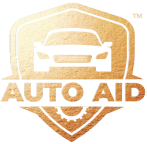Finding yourself stranded with a weak or dead car battery is a common but frustrating experience. Understanding the signs of a weak battery and knowing how to jumpstart your car can save you from being stuck on the road. This blog will provide you with detailed steps to start your car with a weak battery, identify signs of a failing battery, and offer tips to avoid future battery problems. Let’s dive in!
Signs of a Weak Battery
Recognizing the symptoms of a weak battery can help you address issues before they escalate. Here are some common signs:
- Slow Engine Crank: If your engine cranks slowly when you try to start your car, it’s a clear indication that your battery is weak.
- Dim Lights: Headlights and interior lights that appear dimmer than usual can signal a low battery.
- Electrical Issues: Malfunctioning electrical components, such as power windows and radio, may point to a weak battery.
- Dashboard Warning Light: Many cars have a battery warning light on the dashboard that illuminates when there’s a problem with the battery.
- Clicking Sound: Hearing a clicking sound when turning the key indicates the starter motor isn’t receiving enough power from the battery.
How to Start a Car With a Weak Battery
If you find yourself with a weak battery, there are several methods you can try to get your car started.
1. Jumpstarting the Car
Jumpstarting is the most common method to start a car with a weak battery. Here’s how to do it:
Materials Needed:
- Jumper cables
- A functioning car with a good battery
Steps:
- Park the Cars: Position the working car close to the one with the weak battery, but ensure the vehicles do not touch.
- Turn Off Engines: Both cars should be turned off, and the keys should be removed from the ignition.
- Connect Jumper Cables:
- Attach one end of the red (positive) jumper cable to the positive terminal of the weak battery.
- Connect the other end of the red cable to the positive terminal of the good battery.
- Attach one end of the black (negative) jumper cable to the negative terminal of the good battery.
- Connect the other end of the black cable to an unpainted metal surface on the car with the weak battery (such as a bolt or the engine block) away from the battery.
- Start the Working Car: Turn on the car with the good battery and let it run for a few minutes.
- Start the Weak Car: Attempt to start the car with the weak battery. If it doesn’t start immediately, wait a few more minutes and try again.
- Disconnect Jumper Cables: Once the weak car is running, carefully disconnect the jumper cables in the reverse order of connection.
2. Push Start (Manual Transmission Only)
For cars with manual transmissions, a push start can be an alternative method.
Steps:
- Position the Car: Ensure the car is on a flat surface.
- Turn Ignition On: Turn the ignition to the “on” position.
- Push the Car: Have a friend push the car while you sit inside.
- Engage the Clutch: Once the car is moving, press the clutch and shift to second gear.
- Release the Clutch: Quickly release the clutch to engage the engine.
3. Battery Charger
Using a battery charger can recharge a weak battery if you have access to one.
Steps:
- Connect Charger: Attach the charger to the battery following the manufacturer’s instructions.
- Charge the Battery: Allow the battery to charge fully. This process can take several hours.
- Start the Car: Once the battery is charged, start the car as usual.
Precautions When Dealing With a Weak Battery
Safety is paramount when dealing with car batteries. Here are some precautions to keep in mind:
- Wear Safety Gear: Use gloves and eye protection when handling batteries.
- Avoid Sparks: Ensure the jumper cables are securely attached to the terminals to avoid sparks.
- Follow Instructions: Always follow the manufacturer’s instructions for jumpstarting or charging a battery.
- Check for Damage: Inspect the battery and cables for any signs of damage or corrosion.
Tips for Future Battery Health
Maintaining your car battery can help prevent future issues. Here are some tips:
1. Regular Inspections: Have your battery inspected during routine maintenance to check for signs of wear and tear.
2. Clean Battery Terminals: Corrosion on battery terminals can affect performance. Clean them regularly to ensure a good connection.
3. Drive Your Car Regularly: Frequent short trips can prevent the battery from fully charging. Take your car for longer drives occasionally to keep the battery charged.
4. Turn Off Electrical Components: Before turning off your car, ensure all electrical components, such as lights and the radio, are turned off to avoid draining the battery.
5. Monitor Battery Age: Most car batteries last 3-5 years. Keep track of your battery’s age and replace it before it becomes problematic.
Conclusion
Dealing with a weak battery can be stressful, especially when you’re on the road. By understanding the signs of a weak battery, knowing how to jumpstart your car, and taking preventive measures, you can avoid being stranded. Regular maintenance and awareness are key to ensuring your car’s battery remains in good health. Stay prepared and drive safely!
Remember, in case of any uncertainty or persistent issues with your car battery, it’s always best to consult a professional for assistance. Safe driving!
Contact AutoAid!
For Professional Battery Repair and other Roadside Assistance Service Near You, Download AutoAid App

